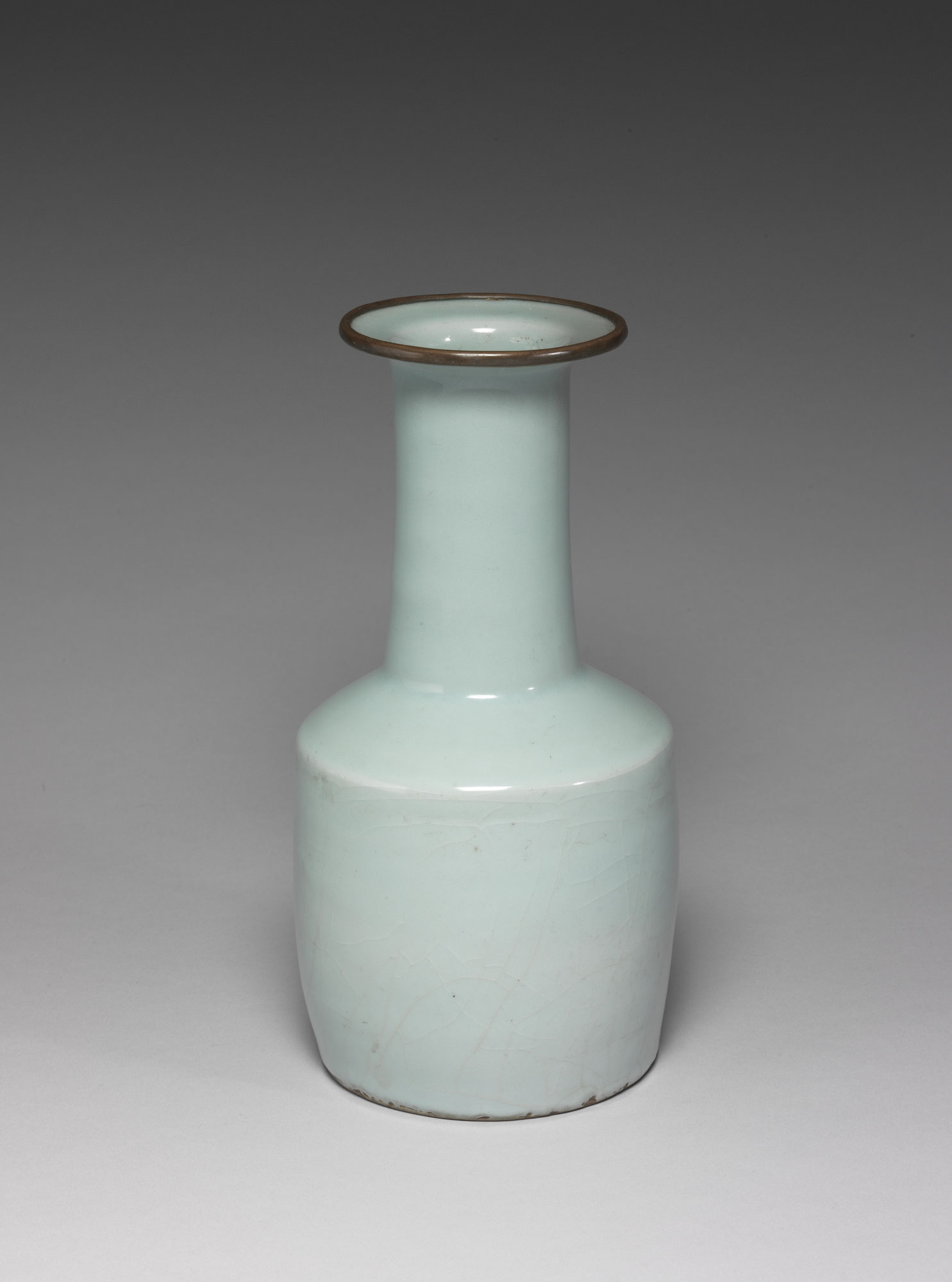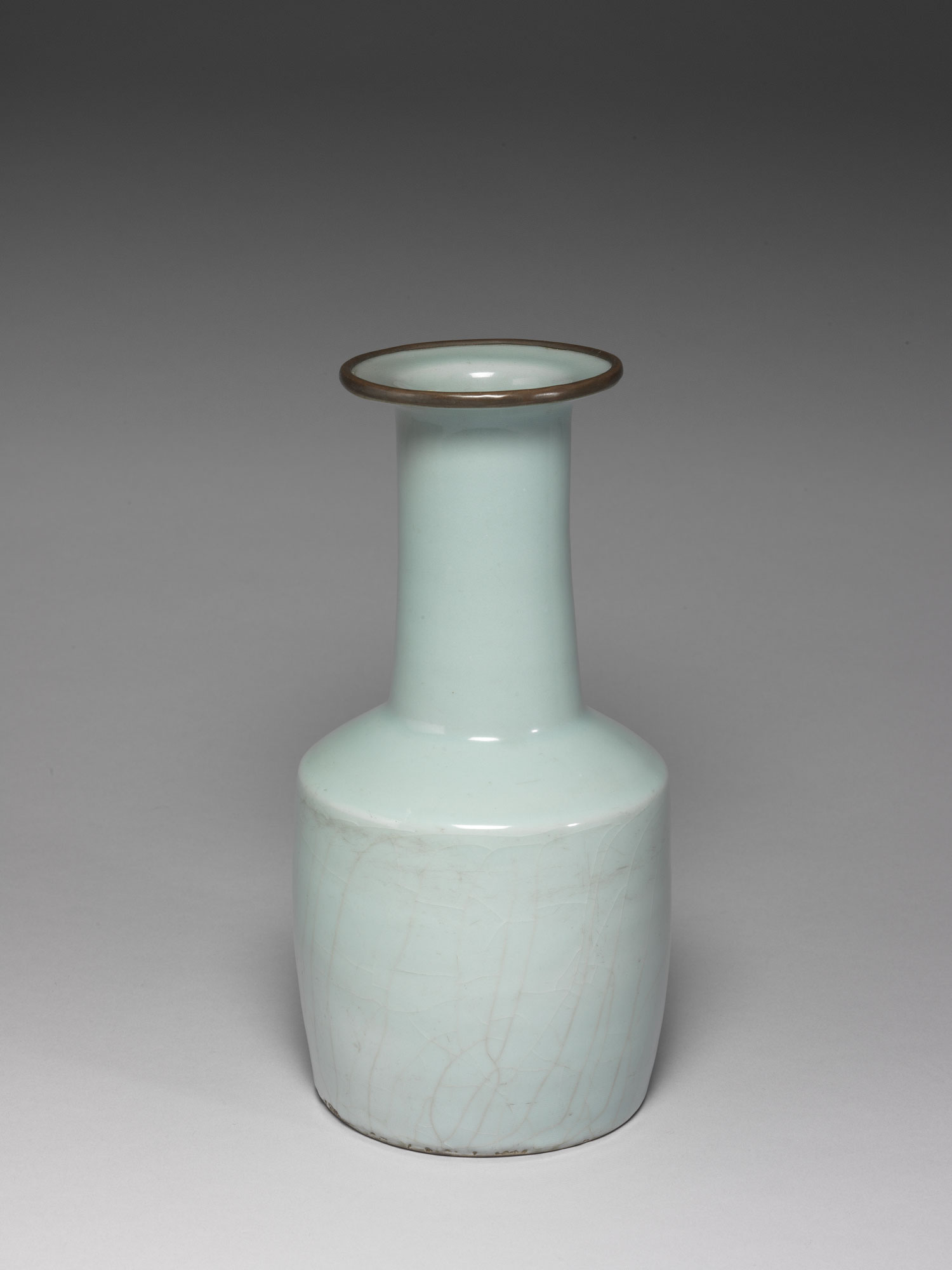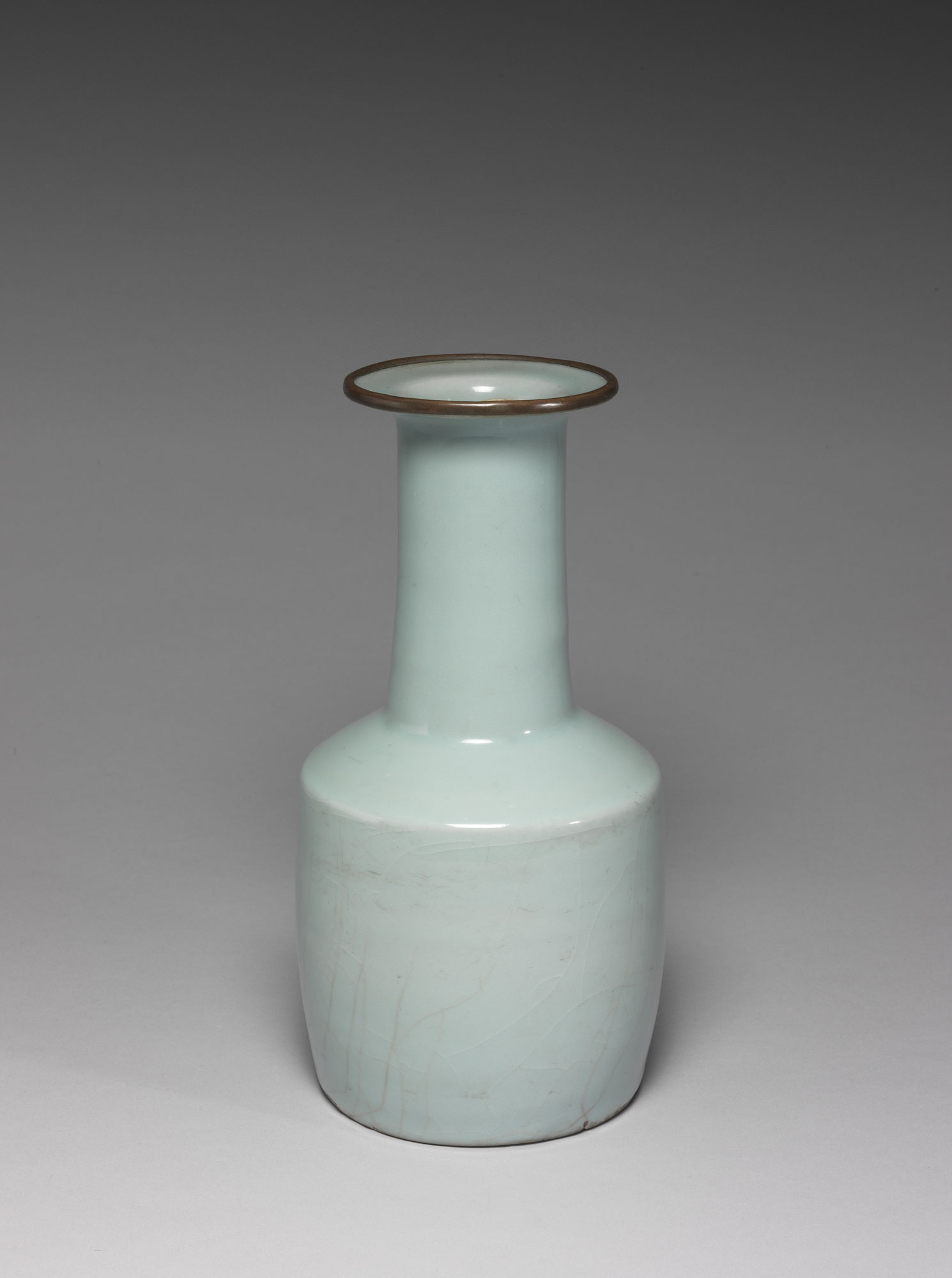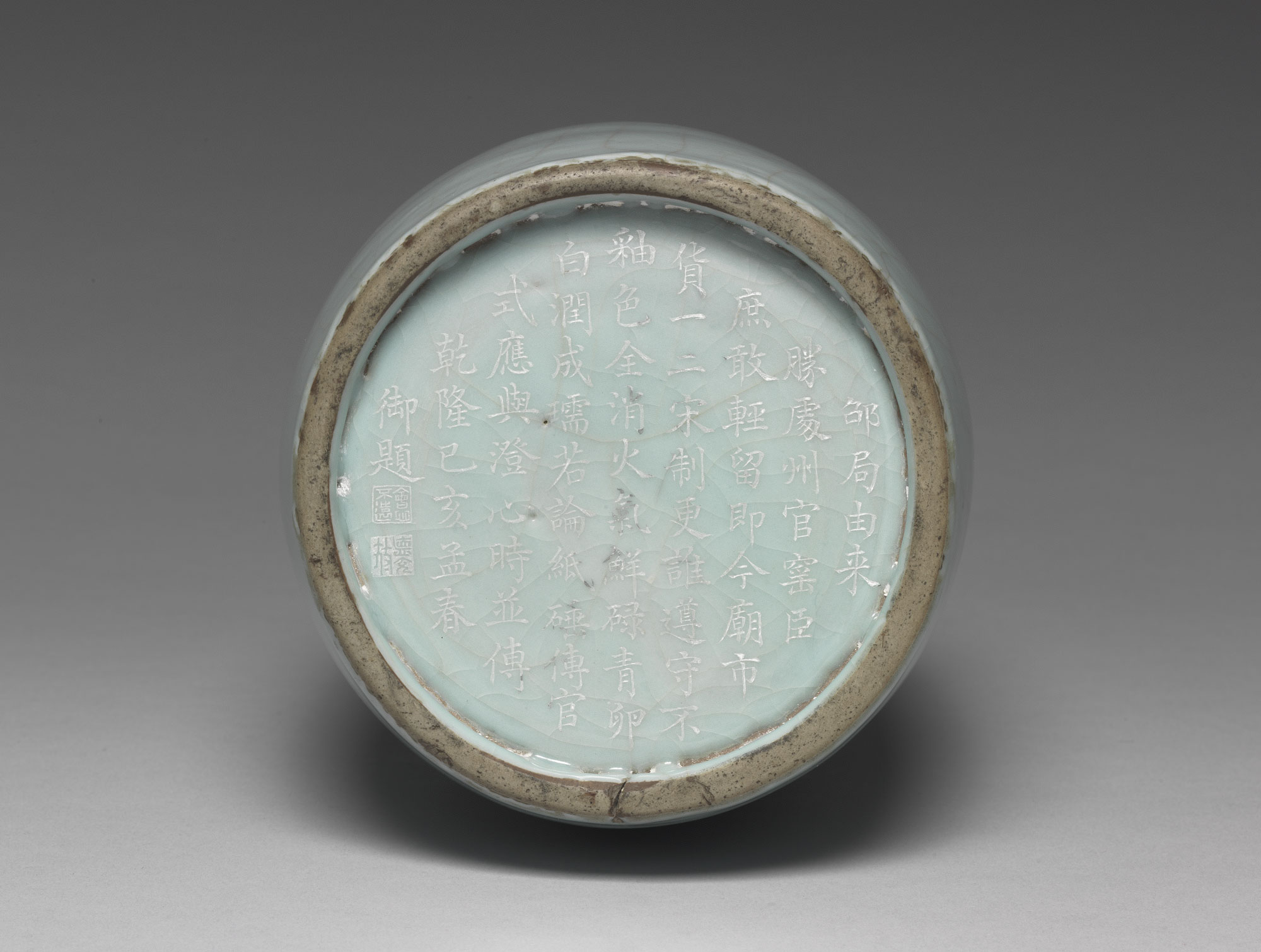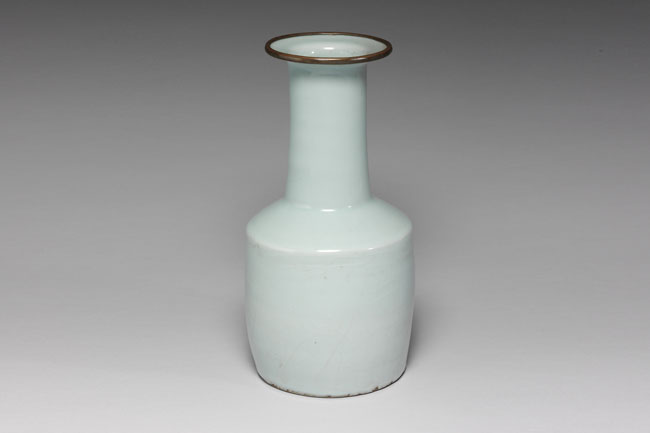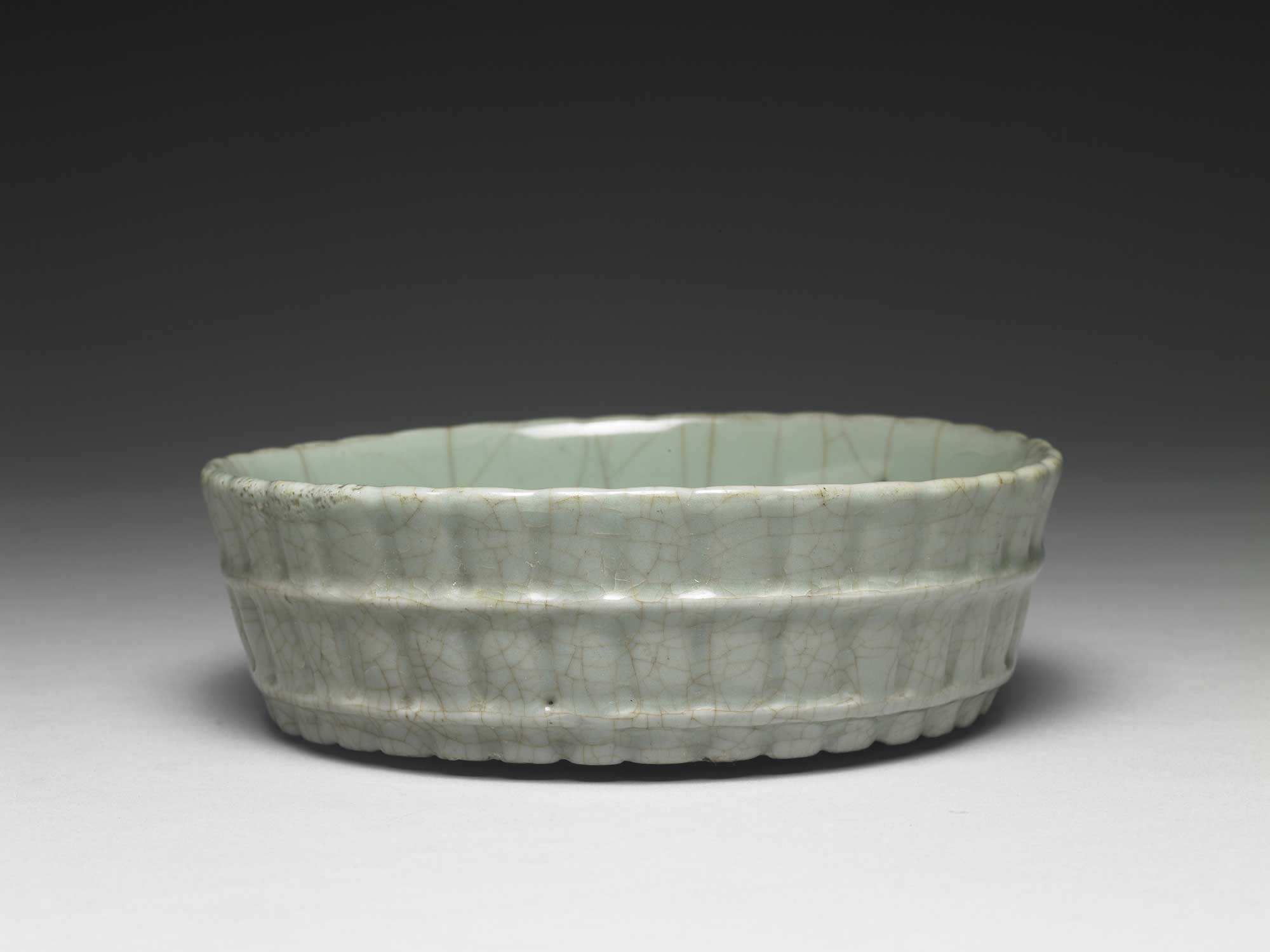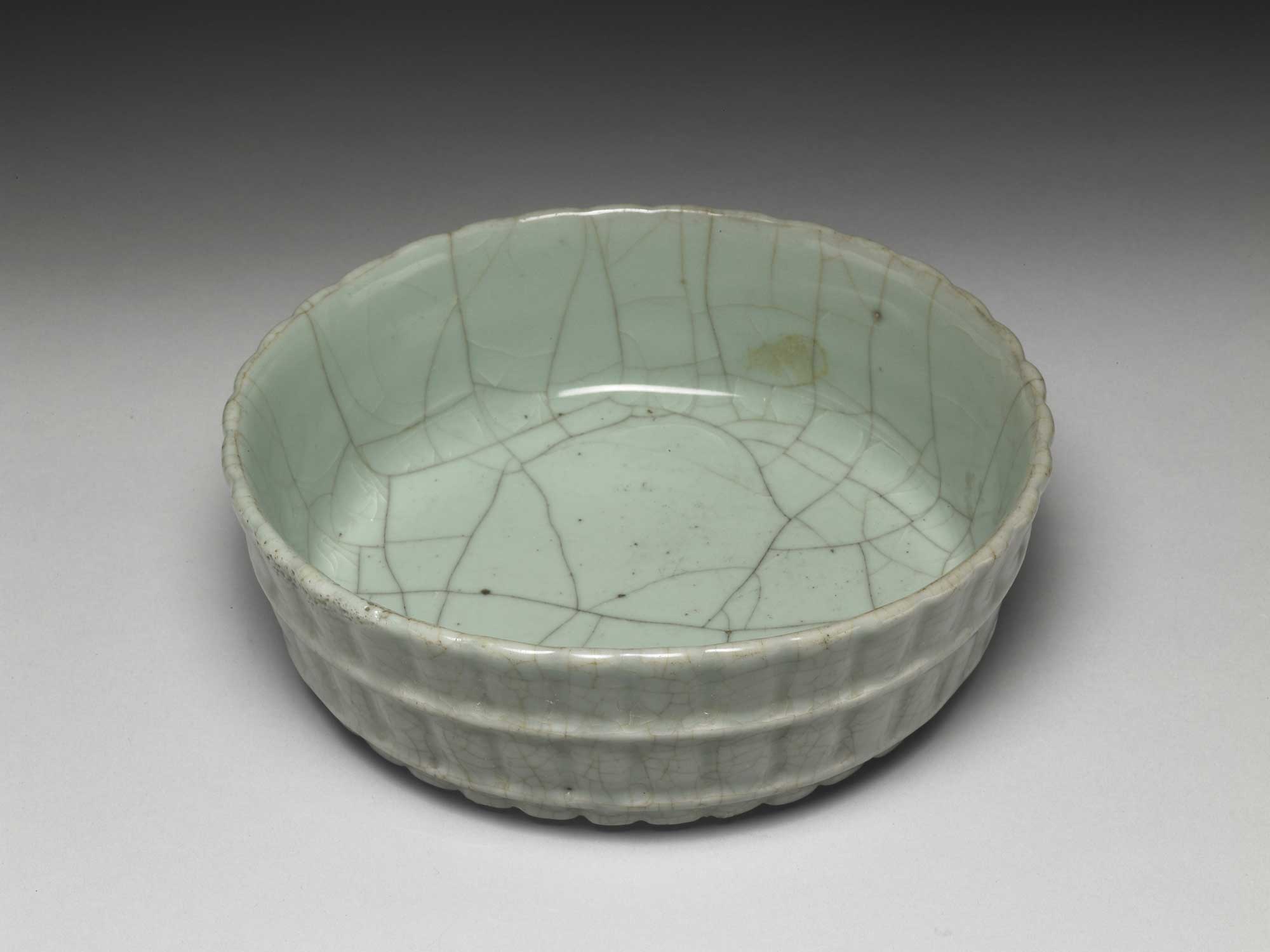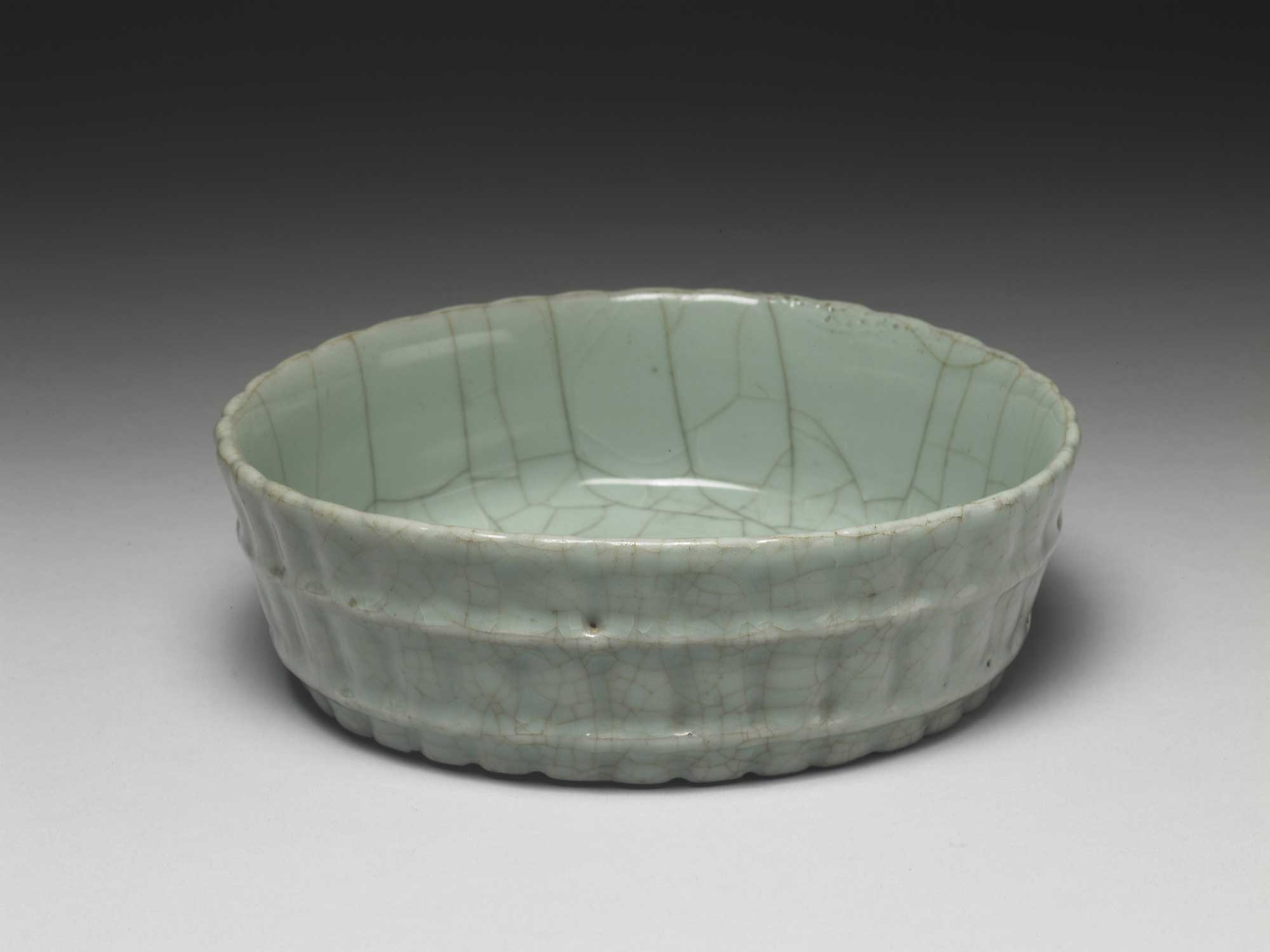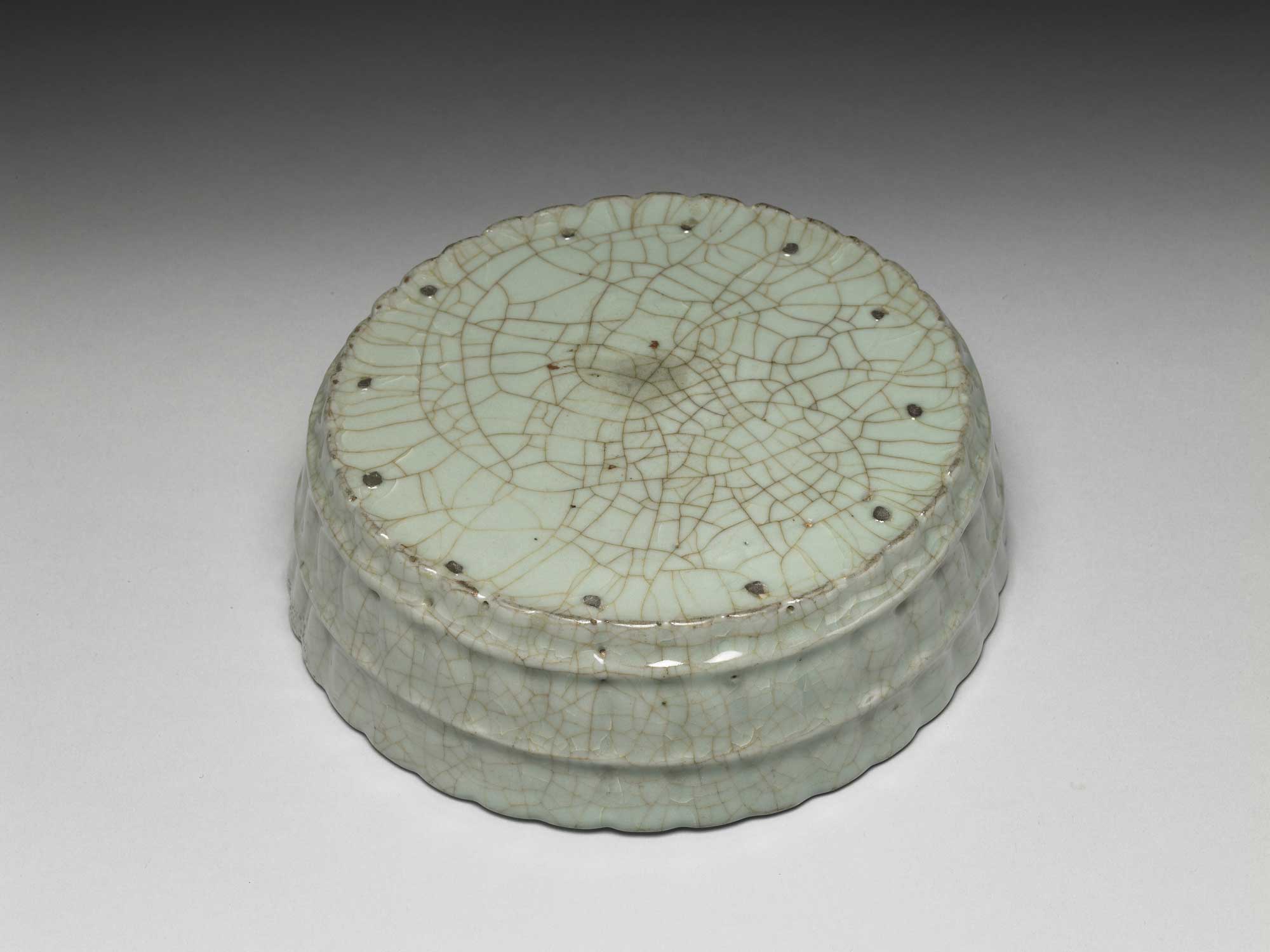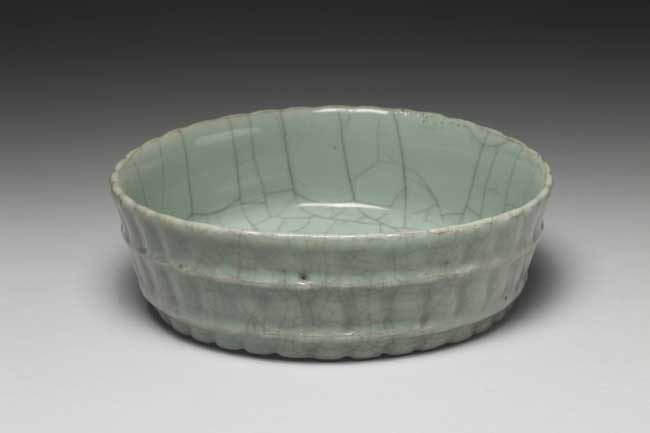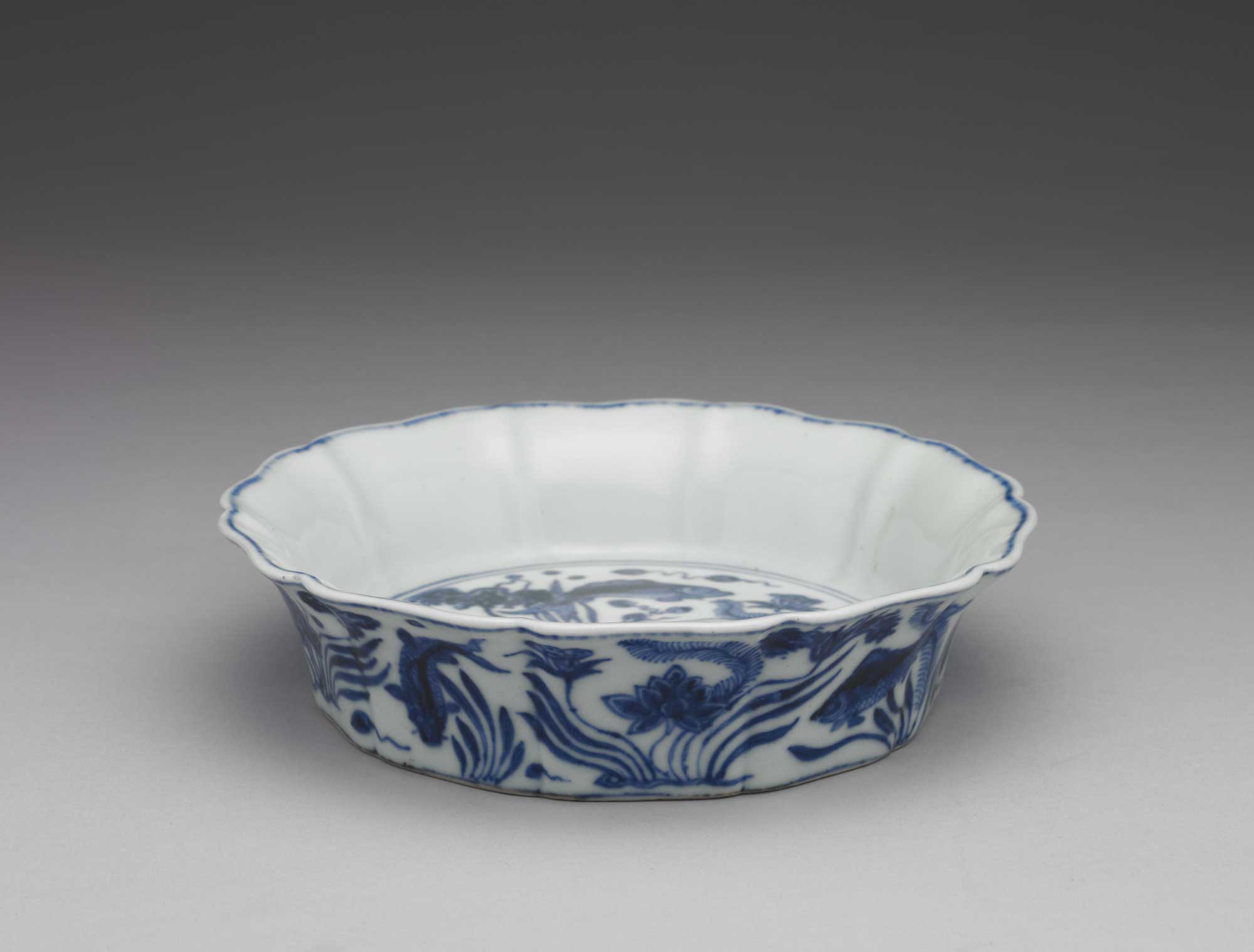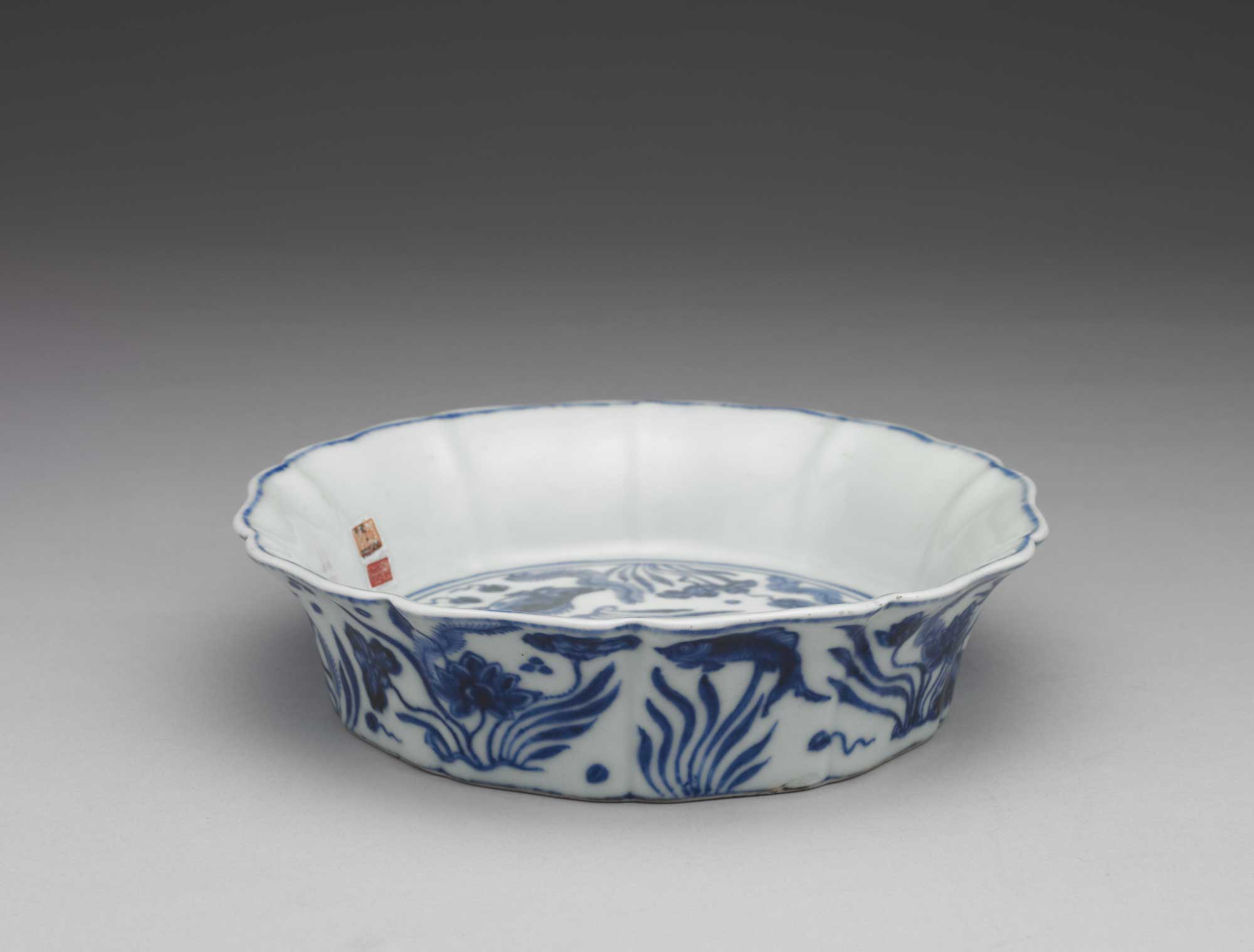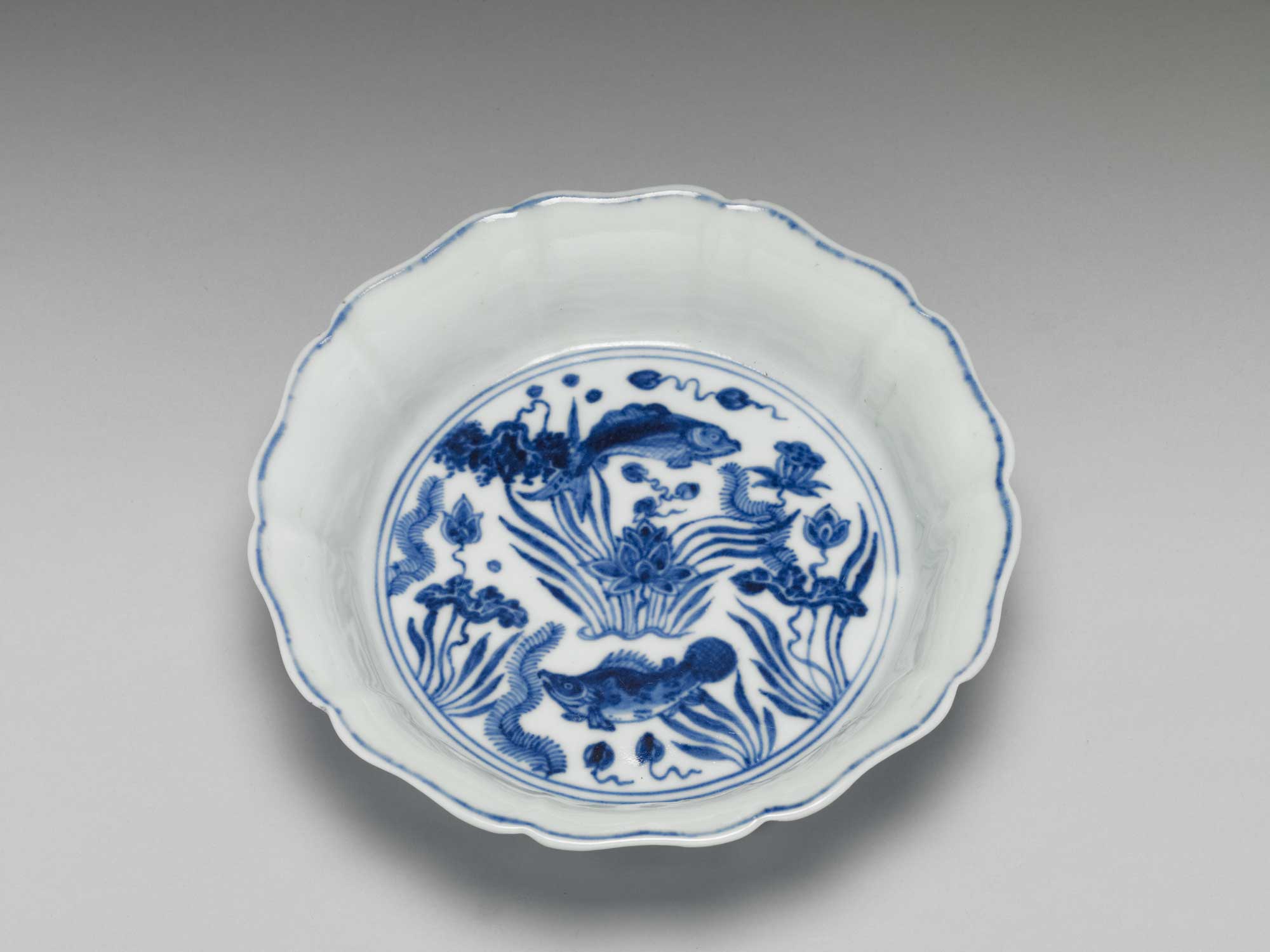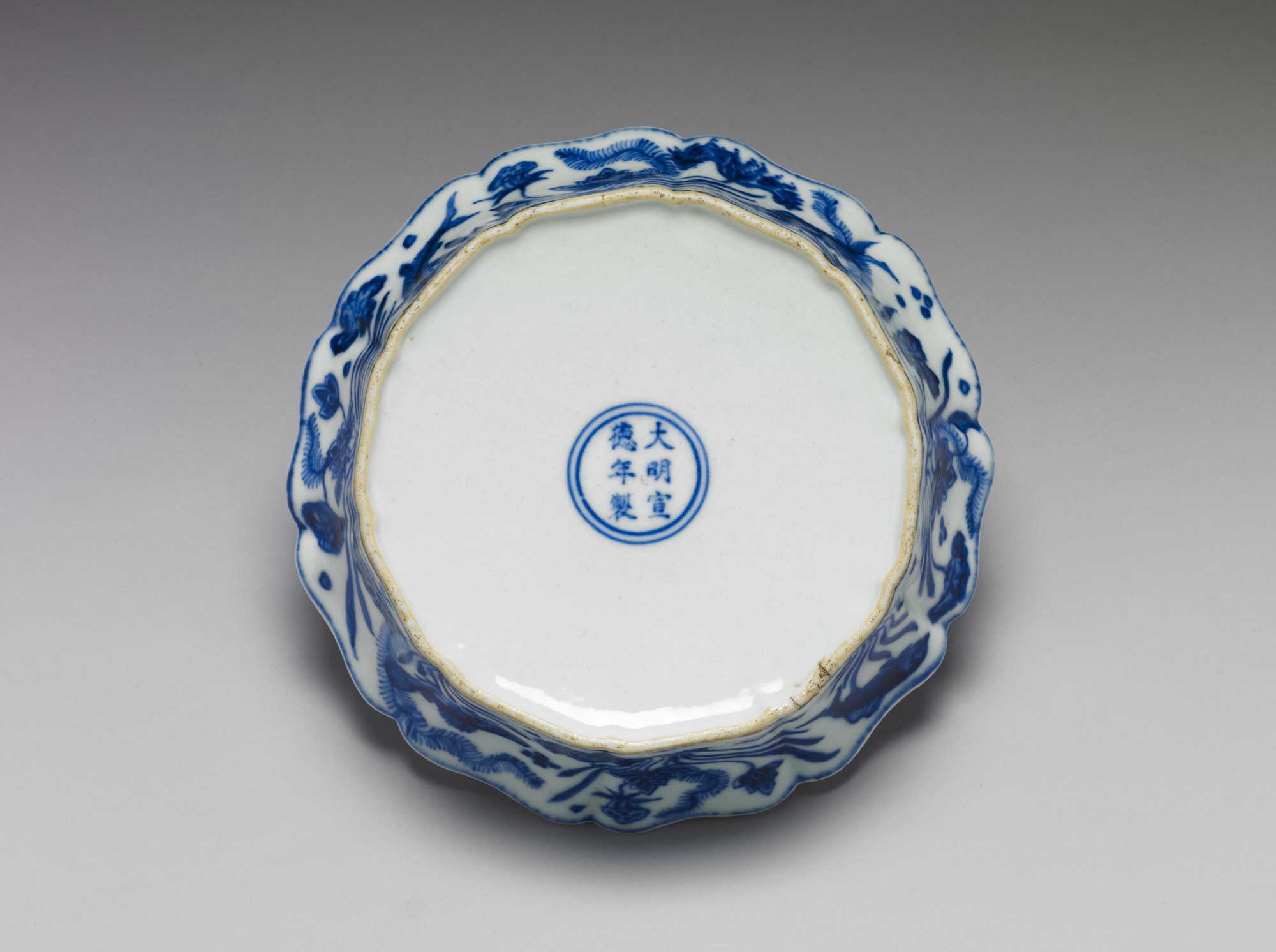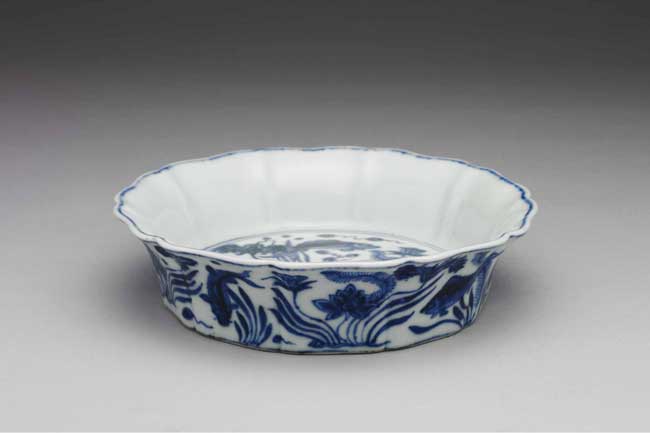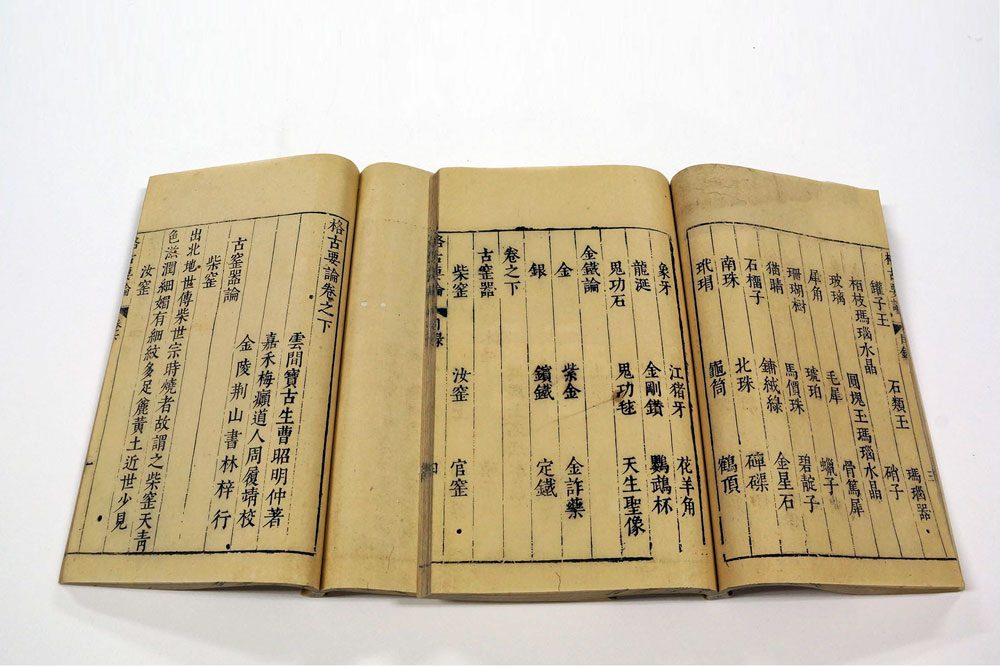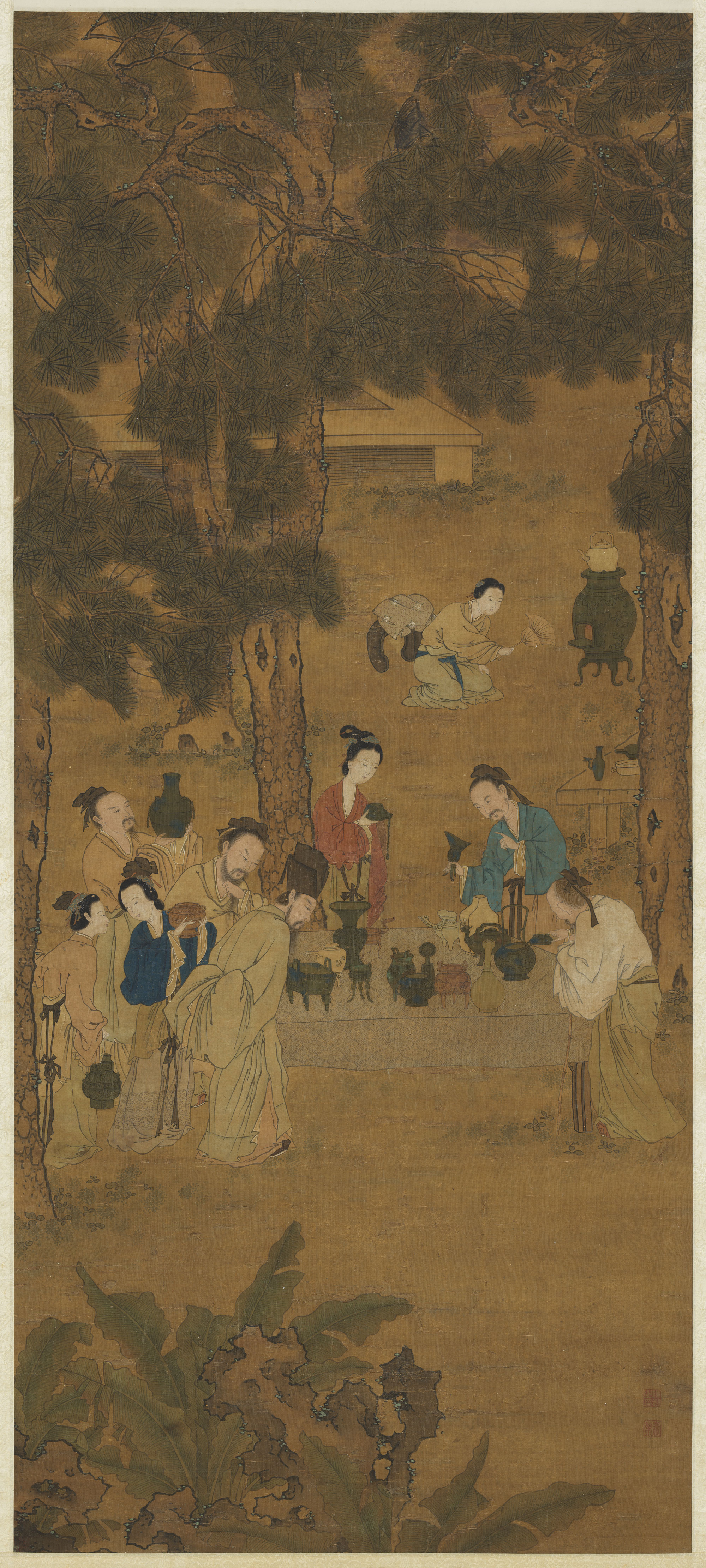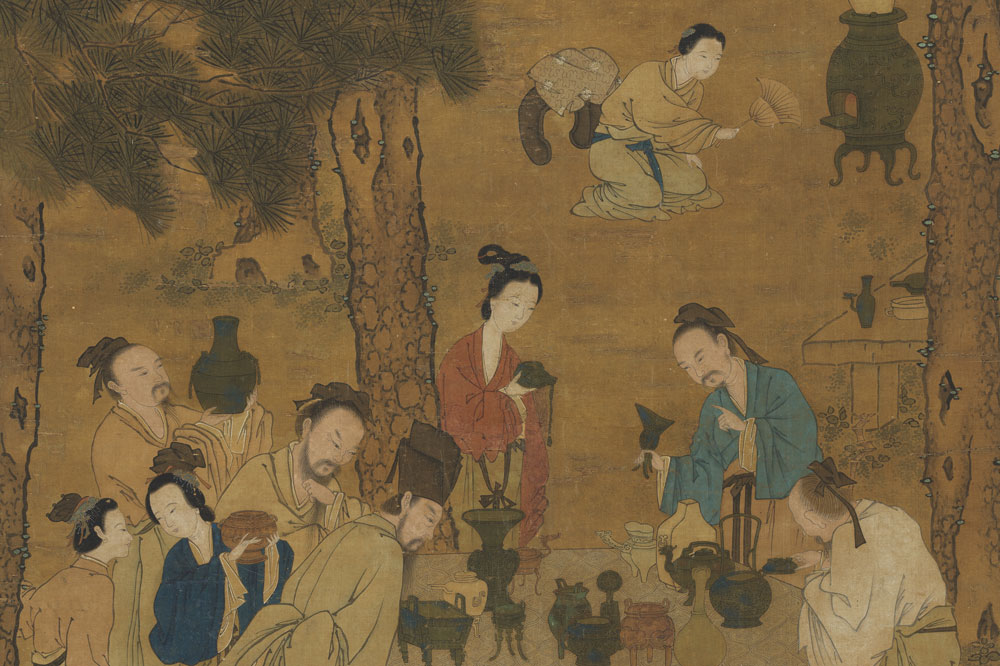Taste of Literati
The connoisseurs who held the similar ideas as Wen Zhenheng, with
their finance reassurance,
began to value their belongings that seemingly functionless. These objects and things, books and
paintings that were used by these collectors to manifest their prestigious status and visions,
then thus became the ordinaries of daily life. The ability to search for the 'extraordinary'
from the ordinaries was then turned into the connoisseurship, which was a concept hard to be
described by the collectors.
The expertise to identify ancient bronzes, porcelains,
calligraphies, paintings, editions from
the Song and Yuan dynasties had all been developed new ideas based on examples of the old. The
"Dongtian Qinglu" by Zhao Xihu from the Song dynasty, and the "Gegu Yaolun" by Cao
Zhao from the
Ming dynasty both explored the origins of objects. The critical research and precise analyse of
these publications had become the guideline for the connoisseurs of following generation. The
connoisseurs before the birth of Wen Zhenheng, such as Zhang Yingwen, Xiang Yuanbian, Tu Long,
they each had individual preferences of antiques and various tastes of elegance. These
connoisseurs of the same generation as Wen Zhenheng, they tended to seek for delights and
admirations through ancient methods. Even if the antiques came from the distant past.
Nonetheless, they brought in new flavours for daily life.
-
Mallet-shaped Vase in Celadon Glaze
- Longquan ware
- Southern Song dynasty (1127-1279)
Since the second half of the 16th century, while the literati collectors were collecting antiquities, it also brought about the fashion of flower arrangement and appraising vases. It especially emphasized on the appropriate time when it came to the classification and usage of flowers and vases. Take this vase for example, the imperial poem by the Qianlong Emperor, "Mallet shape was inherited from Guan style" presents that this vase is mallet-shaped vase. It echoes the "applicable vase" mentioned in Pinghuapu (1595) by Zhang Qiand.
-
Washer with Encircled Design in Celadon Glaze
- Guan ware
- Southern Song dynasty (1127-1279)
Brush Washers were one of the essential tools for the ancient scholar studios. Wen Zhenheng had listed products made of bronze, porcelain, jade and other materials. Among them, porcelain wares made in the Song and Ming dynasties (12th to 15th centuries) were the majority. It shows that the literati in ancient times extensively collected antique stationery.
-
Floral-rimmed Washer with Lotus Pond Design in Underglaze Blue
- Xuande reign (1426-1435), Ming dynasty
The washer in underglaze blue has the rim shaped into ten flower petals. Patterns of swimming fish and water plants decorate the inner bottom and the exterior of the vessel, which was the Xuande porcelain reckoned by Wen Zhenheng as applicable object in the studio.
-
Gegu Yaolun
Important Discussions about Assessing- Written by Cao Zhao, Ming dynasty
- Imprint by the Jingshan Shulin studio as part of the collectanea Yiman Guangdu (Extensive Texts from the Peaceful Gate), Wanli reign, Ming dynasty
Drawing on the knowledge and experiences learned from his father since childhood, Cao Zhao offers in this work a collection of writings addressing the provenance as well as strengths and weaknesses of such antiquities as bronze wares, calligraphic works, paintings, rubbings, porcelains, lacquer wares, and so on. It was considered by many Ming and Qing connoisseurs as a standard treatise on the identification and assessment of antiquities.
-
Picking Chrysanthemums
- Attributed to Tang Yin (1470-1523)
- Ming dynasty
'Portraits of ancient master' was also reckoned by the Treatise on Superfluous Things as the leading subject. This painting illustrated the idol of literati Tao Yuanming, thus it must had been categorized into the 'portraits of ancient master' in the late Ming dynasty.
-
Bronze Ding Cauldron of Shi
- 11th Century B.C.E., Shang dynasty
- Jade Finial with "Dragon Roaming among Flowers" Design
- Yuan dynasty (1271-1368)
The Ding Cauldrons were casted as cooking vessels, but were given a wooden lid to become incense burners in the Ming dynasty. But they were not regarded as good burners, but good items for appreciation.
-
Examining Antiques
- Attributed to Liu Songnian(active between 1174-1224)
- Song dynasty
This piece was possibly done around the 17th century. The painted figures concentrate on examining the bronzes and porcelains, and those pieces can be traced back to the Xuanhe Bogutu (Illustrated Catalogue of Antiquity in the Xuanhe Era). This picture delivers the trend of appreciating antiques in the late Ming dynasty.
